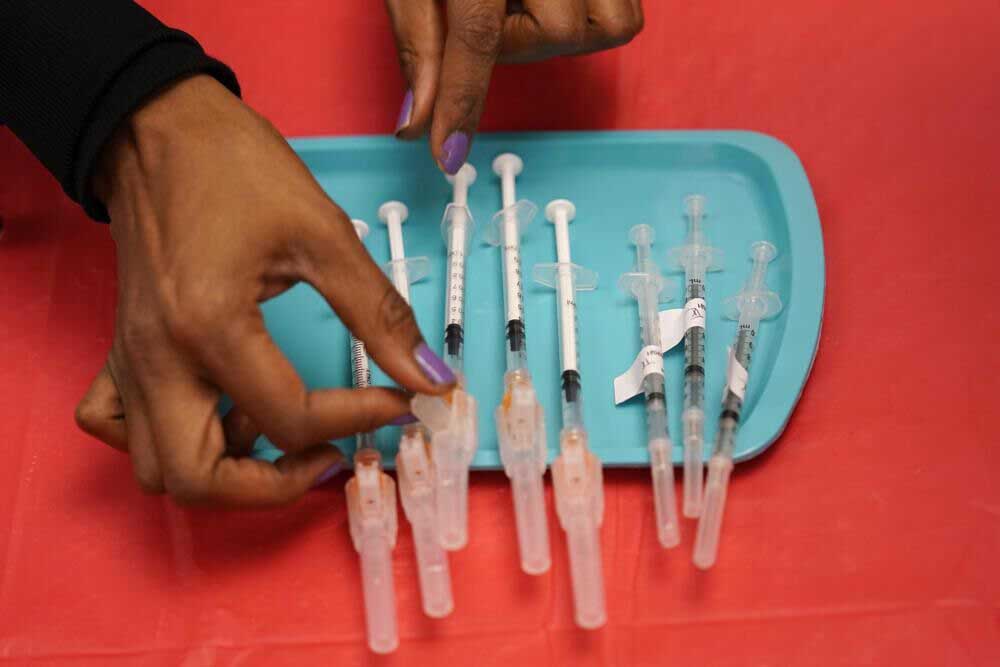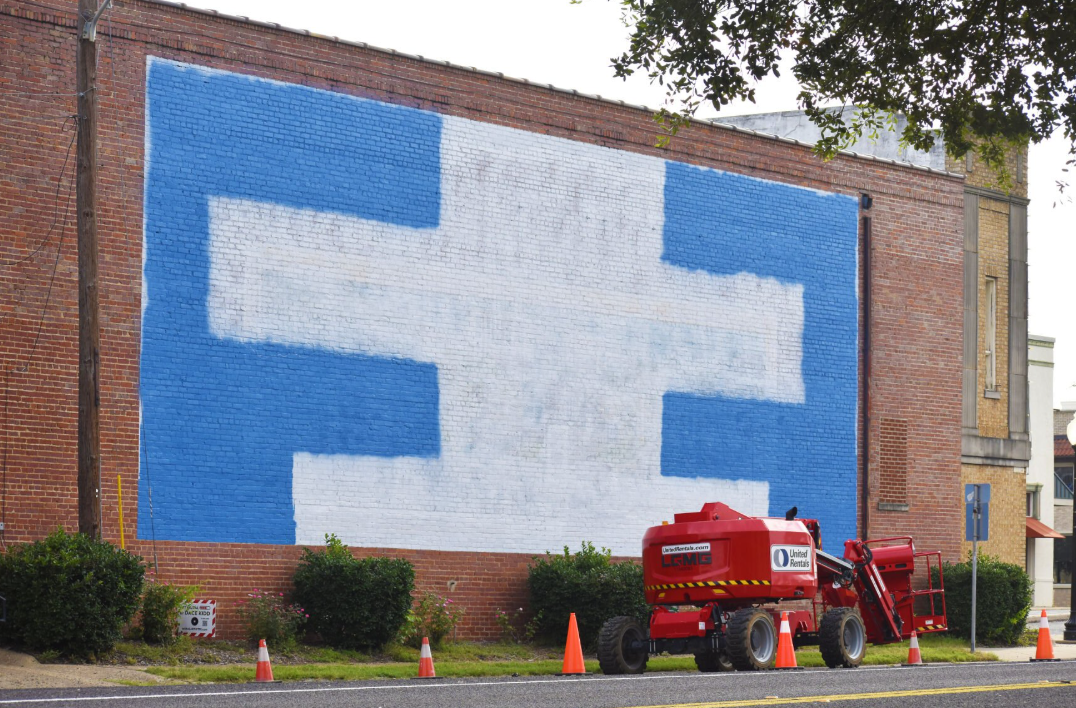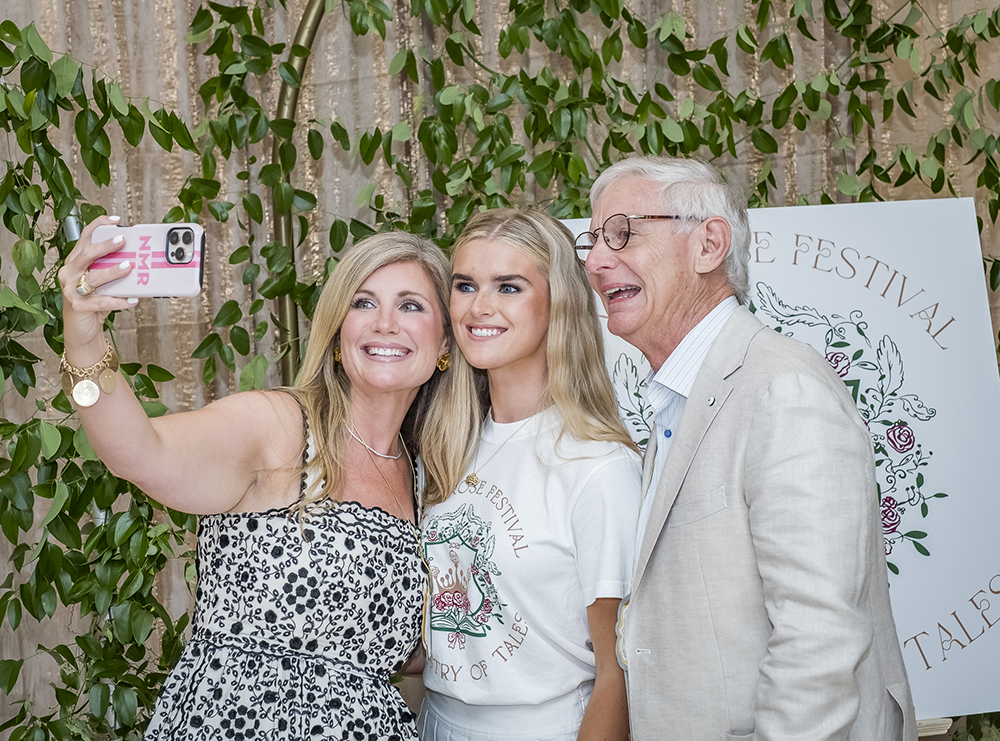What is herd immunity, and how can we get it?
Published 5:45 am Saturday, October 16, 2021

- In this Jan. 22 file photo, a certified medical assistant prepares doses of the Pfizer COVID-19 vaccine at a vaccination center at the University of Nevada, Las Vegas. With more than 40 million doses of coronavirus vaccines available, U.S. health authorities said they’re confident both seniors and other vulnerable Americans seeking booster shots and parents anticipating approval of initial shots for young children will have easy access.
In a county where the seven day rolling rate of COVID-19 infection remains at substantial levels, while 48.73% of the population 12 and up are fully vaccinated and 76.26% of those 65 and up are fully vaccinated, the question of herd immunity rises, along with questions about protecting the unvaccinated.
Herd immunity occurs when a large percentage of the population becomes immune to a disease, resulting in a decrease in community spread levels. As a result, the entire community is protected, not just those who are immune.
Trending
The Mayo Clinic reported in August the percentage for a population that needs to be immune for the rest to achieve herd immunity varies from disease to disease. The more contagious a disease is, the greater the proportion of the population that needs to be immune to the disease to stop its spread.
If enough people in the population have recovered from a disease and have developed protective antibodies against future infection, herd immunity is possible. This is not the case, however, for the virus that causes COVID-19.
Reinfection is not the only concern when it comes to natural infection, and with different variants of the virus, which seems to have been attacking different age groups every time, repeatedly contracting the virus could ultimately cause a higher number of deaths.
“Yes, there is some protection from the antibodies generated by having had COVID,” UT Health Chief Medical Officer Dr. Tom Cummins said. “What we don’t know is how long those antibodies and that protection lasts.”
As the virus mutates, it’s unknown how well those antibodies and protection are maintained as antibodies from one strain may not protect against a different strain, he added.
“People get the flu even after the vaccine. You get vaccinated again the next year because the virus keeps mutating,” Cummins said, adding virus mutations and the unknown time immunity lasts after natural infection is why the recommendation to get vaccinated remains.
Trending
Herd immunity through natural infection, on the other hand, would mean a large portion of the population would have to risk their lives and possibly die.
“In order to get to, quote-unquote, ‘natural immunity’ that would mean something like 80% of Smith County would’ve had to have COVID, which is a lot,” he said.
Using round numbers, Cummins explained that if Tyler’s population was 100,000 people, 80,000 would have had to have COVID. With a 5% mortality rate, that would make for 4,000 deaths in Tyler alone.
Christus Trinity Clinic Ambulatory Chief Quality Officer Andria Cardinalli-Stein says that while any immunity is good immunity, “we want to use every available tool to boost our immunity as high as possible in every person.”
Cardinalli-Stein said the rate of reinfection after natural immunity may be slightly lower after having received two doses of the COVID mRNA vaccine, and to confirm, she added that in one study, being vaccinated after having had COVID reduced the risk of reinfection by half, compared to not being vaccinated after having covid.
“At this point, even if you have antibodies to COVID, that doesn’t necessarily protect you. People with detectable antibodies can become sick and hospitalized with COVID. We hope that there will someday be a known level of antibody that is protective, but we don’t have that information yet,” Cardinalli-Stein said.
Cummins, the chief medical officer, said herd immunity can be reached through vaccinations.
The World Health Organization (WHO) confirmed the percentage of those who need to be immune in order to achieve herd immunity varies with each disease, and for COVID-19, the population that must be vaccinated against the virus to begin inducing herd immunity is not known.
“This is an important area of research and will likely vary according to the community, the vaccine, the populations prioritized for vaccination, and other factors. Achieving herd immunity with safe and effective vaccines makes diseases rarer and saves lives,” the WHO published.
Some have questioned that if vaccinated people can still spread the virus, what is the point of receiving the COVID vaccine.
“Even with the delta variant, the vaccines prevent infection at least 65% of the time. These people cannot spread COIVD to others,” Cardinalli-Stein said.
She added the possibility of becoming severely ill or requiring hospitalization after being vaccinated is far less likely. “The tricky nature of covid is that you can sometimes be infected and minimally or not symptomatic, this is why distancing, masking, and hand hygiene continue to be valuable tools at stopping the spread of COVID,” Cardinalli-Stein said. The risk of minimally or not symptomatic COVID infection is decreased in vaccinated people compared to unvaccinated people, so vaccination still has a benefit for the individual and for our community.
Cummins added that while {span style=”text-decoration: underline;”}hospitalizations have decreased significantly recently{/span}, they still have “a fairly large number” of COVID patients who aren’t progressing. “The only way to stop that from happening is widespread vaccine use,” he said. “Having had the virus is not reason enough to not get vaccinated.”






